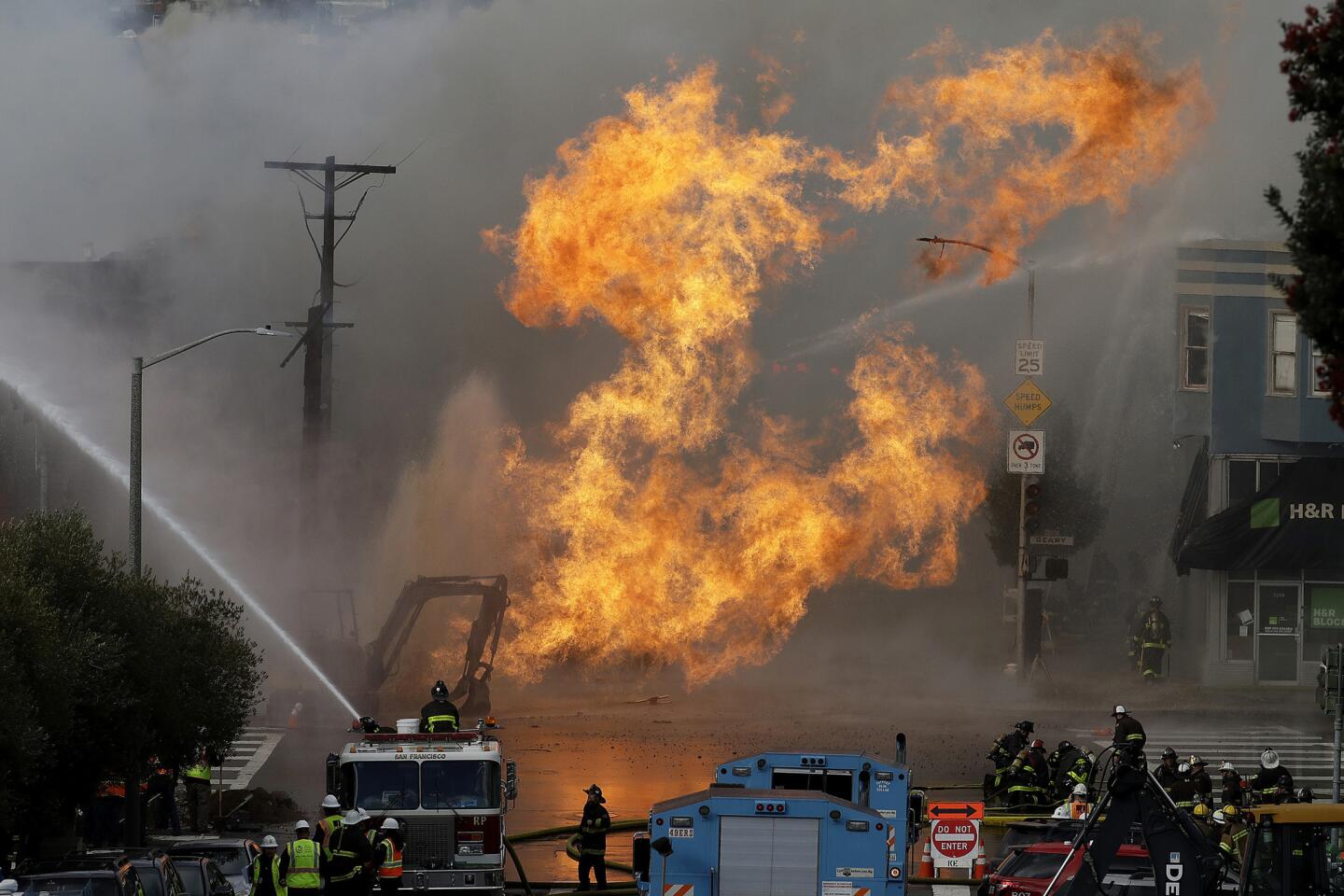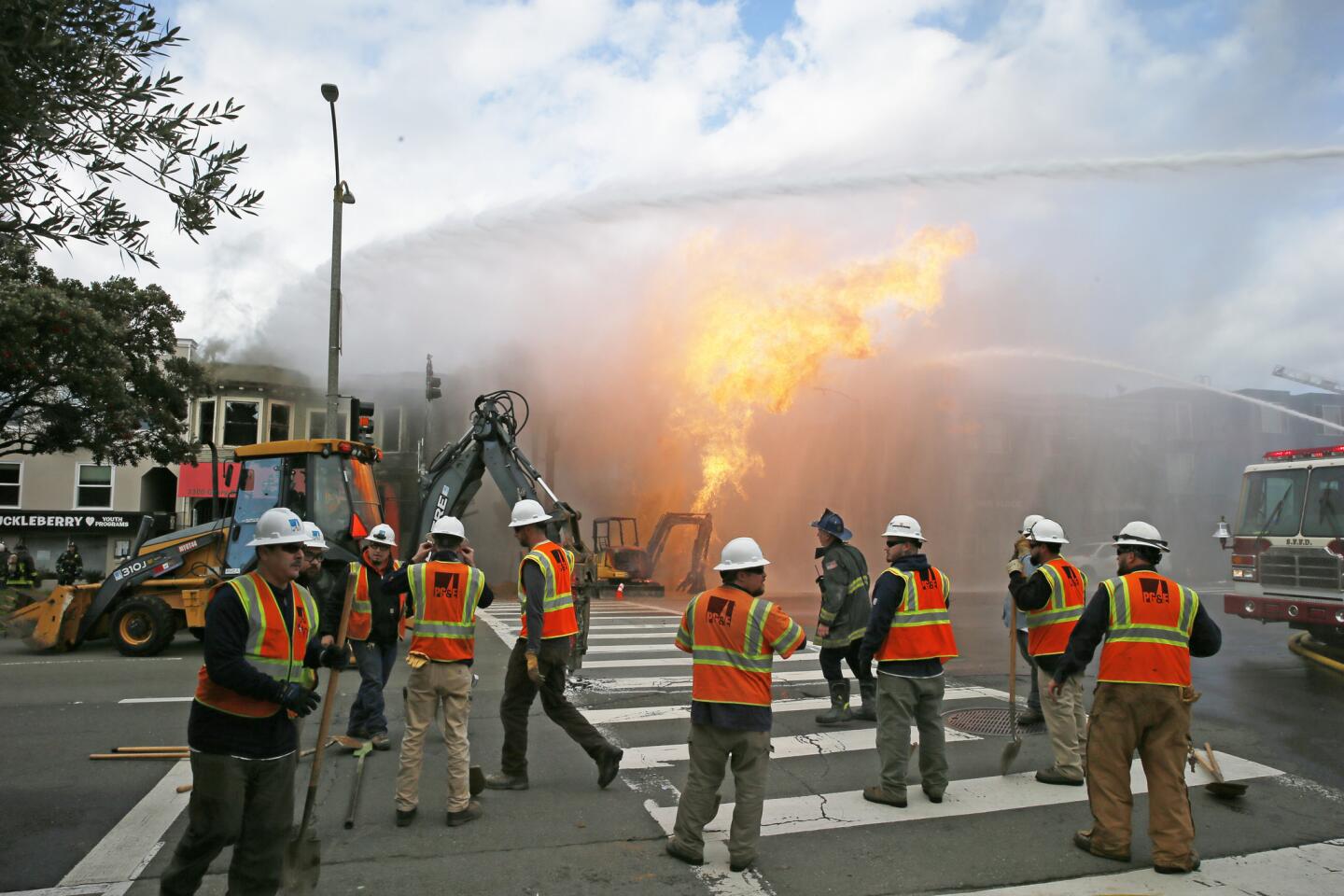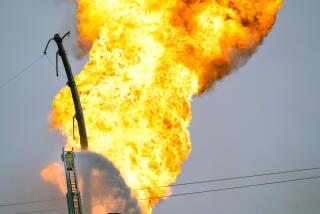Gas line explosion sets popular San Francisco restaurant Hong Kong Lounge II on fire
- Share via
Reporting from San Francisco — A gas line exploded in San Francisco on Wednesday, setting buildings on fire, including one housing one of the Bay Area’s most popular dim sum restaurants.
It took more than two hours before the towering flames, rising as high as three stories, fed by the gas line vanished. The largest flames came from the street next to the Michelin-rated Hong Kong Lounge II, known for its baked pork buns and salt-and-pepper soft-shell crab.
“The good news is that no one was injured or hurt,” Mayor London Breed said. Five buildings suffered damage of some kind, whether from flames or water.
The explosion at 1:18 p.m. occurred in the 3300 block of Geary Boulevard along one of the city’s busiest thoroughfares in the Richmond District.
It was believed to have been caused by construction workers for a private contractor breaching a gas line while working on fiber optic cables under the street, San Francisco Fire Chief Joanne Hayes-White told reporters at a news conference.
Pacific Gas & Electric was unable to shut off the gas line for more than two hours after the explosion occurred. “It won’t be under control until PG&E manages the gas,” Hayes-White said shortly before the flames were out.
Trying to identify which gas line needed to be shut off was a difficult process, according to PG&E spokesman Blair Jones.
Utility crews had to dig into the street with hand tools and figure out which line to shut, Jones said at a news conference.
“It’s not as simple as digging in … and pinching off the gas line. You have to go slow” while avoiding damage to other utilities, such as water, fiber optics and electricity, he said.
“If you’ve ever tried to dig under a street with a shovel … it’s a difficult proposition,” Jones said.
A wrong move could have needlessly shut off gas service to thousands of people, Jones said. By Wednesday evening, about 300 customers were without gas service and 2,500 without electricity.
While PG&E emphasized the gas line was not breached by its own employees, the utility faced questions about why it took so long to shut the flow of natural gas.
In 2010, after a much larger explosion of a PG&E natural gas pipeline in the nearby suburb of San Bruno, it took the utility almost 95 minutes to shut off the gas spewing from the pipeline. The National Transportation Safety Board contended a lack of automatic shutoff valves and valves that can be closed remotely contributed to the slow response.
The gas explosion in San Bruno killed eight people and destroyed 38 homes. Federal officials said the 2010 explosion was triggered by an electrical problem at a control center in Milpitas, 40 miles from San Bruno, that caused valves that regulate pipeline pressure to open. As pressure built up, inadequate welds in a section of pipe ruptured.
PG&E has continued to come under intense criticism for its management of pipelines.
In December, the California Public Utilities Commission said PG&E had violated rules between 2012 and 2017 requiring utilities to locate and mark natural gas pipelines to make sure other companies or people don’t accidentally damage them during construction and other projects that involve digging.
The commission’s investigation found that PG&E didn’t have enough employees dedicated to that work and that PG&E supervisors, facing pressure from their bosses, falsified data “so requests for pipeline locating and marking would not appear as late.”
PG&E said it has already worked to improve its pipeline safety record-keeping by hiring more employees, improving its training programs and upgrading its review and audit protocol.
Lin reported from San Francisco and Reyes-Velarde from Los Angeles.
Twitter: @r_valejandra
More to Read
Sign up for Essential California
The most important California stories and recommendations in your inbox every morning.
You may occasionally receive promotional content from the Los Angeles Times.















